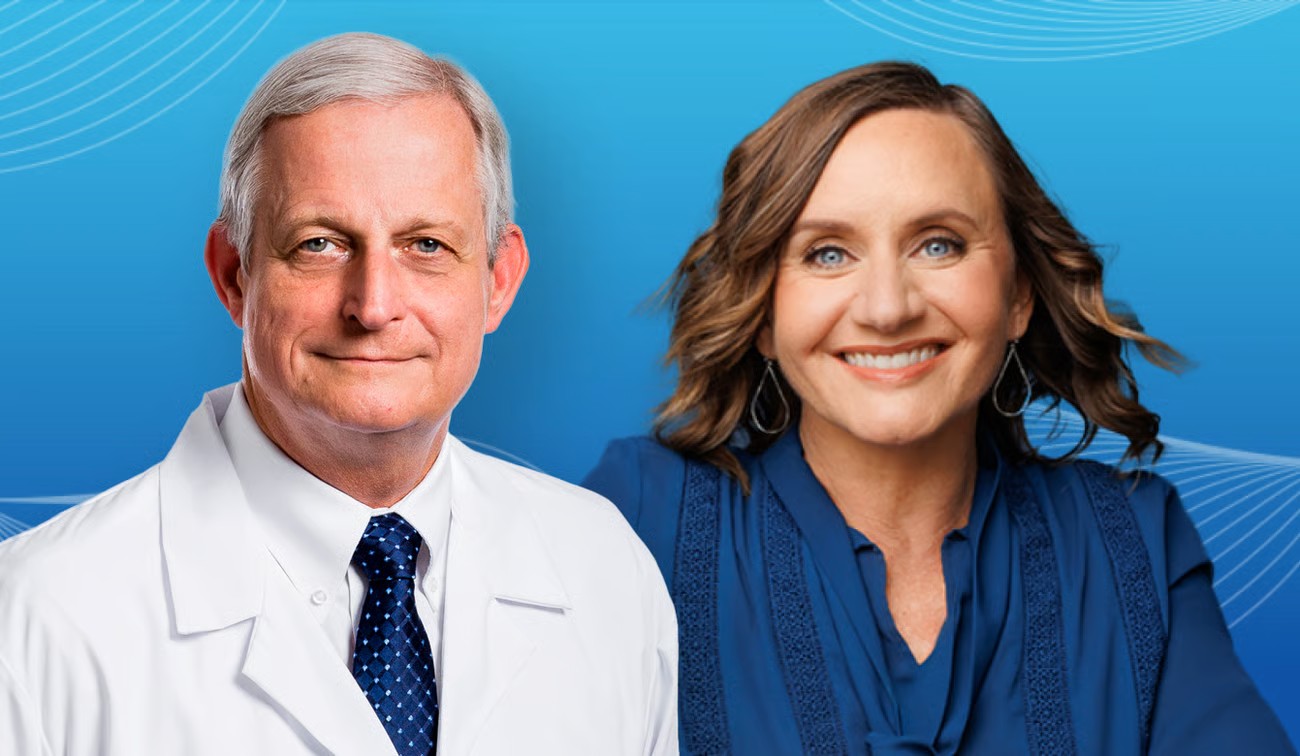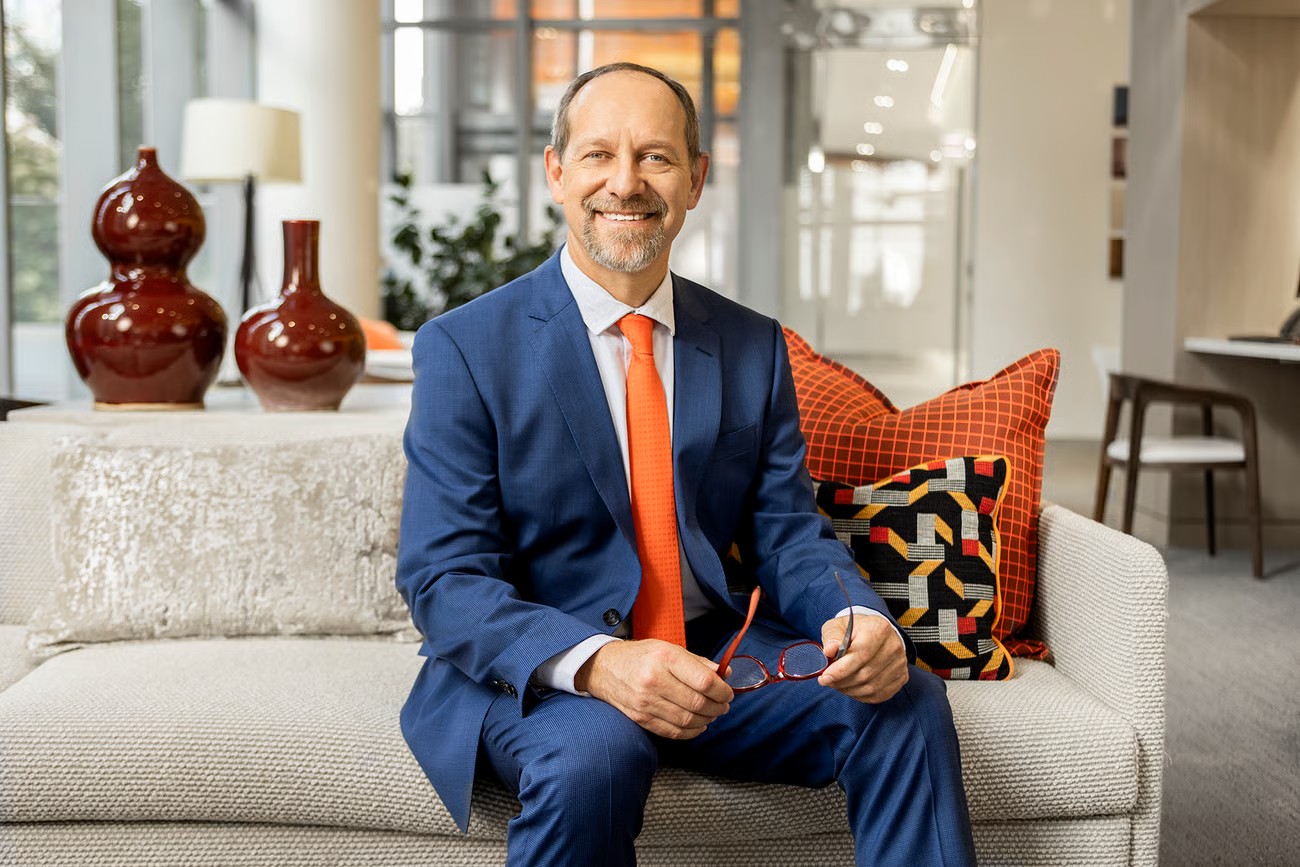Body
Thank you for reading our PM&R newsletter, which taps the brainpower of our clinicians, scientists and alumni to highlight our specialty from every angle. Our goal: to deliver actionable insights and valuable takeaways to your inbox — on time, on topic and on point.
Are you planning to attend the AAPM&R annual meeting October 22-25? Visit us at Booth 522 in the Exhibit Hall and don't miss the presentations from Shirley Ryan AbilityLab physicians and alumni.
Featured Articles
Body
- Feature. James Sliwa and Cheri Blauwet Reflect on PM&R’s Past, Present & Future
- CME Opportunity. Precision Human Ability: Optimizing Function
James Sliwa and Cheri Blauwet Reflect on PM&R’s Past, Present & Future
Body
Following a 41-year career at Shirley Ryan AbilityLab, James Sliwa, DO, is retiring this fall. Over the course of four decades, he has cared for thousands of patients with his signature expertise, empathy and commitment. Additionally, for more than 30 years, Dr. Sliwa was Shirley Ryan AbilityLab’s program director for residency training, teaching generations of physiatrists. In these capacities, as well as through his leadership at AAPM&R, ABPMR and other professional associations, he has served as a model and mentor for hundreds, if not thousands, of doctors and clinicians within our organization and across our field.
Cheri Blauwet, MD — a Shirley Ryan AbilityLab alumna, physiatrist and Paralympic champion — is succeeding him, joining our organization as senior vice president and chief clinical officer. Dr. Blauwet brings the background, passion and drive to build on the legacy that Dr. Sliwa and others have helped establish.

Recently, Drs. Sliwa and Blauwet reflected on their careers and the future of our field. Read the discussion:
Dr. Blauwet, you completed your fellowship in sports medicine at Shirley Ryan AbilityLab. At the time, Dr. Sliwa led the residency program. What are some of your early recollections of each other?
Cheri Blauwet (CB): We probably first met at AAPM&R or AAP when I was a med student or resident. I knew of Jim as the senior leader who had shaped the field of PM&R in important ways over many years.
James Sliwa (JS): As a resident, Cheri already had accomplished so much up to that point athletically — a testament to her ability and perseverance. No one medals seven times at the Paralympics as a side hobby. Anyone who excels in something — let alone athletics — is likely to be extremely successful in whatever they do when they apply that same dedication.
Dr. Sliwa, you’ve talked about how the care at Shirley Ryan AbilityLab, and its evolution over time, has represented a microcosm of changes in the specialty. Can you walk us through some of those notable changes during your career?
JS: When the specialty was getting started, it was predominantly inpatient and there was no subspecializing. There was no “general rehabilitation” focused on areas outside of TBI, SCI and stroke. This has all changed.
I think the largest shifts are reflective of changes in acute care. For instance, LVADs didn’t exist when I started. Organ transplants weren’t common either (I’ll never forget taking our hospital’s first heart transplant patient the week before Christmas in 1988). There was no playbook. Yet, if we, as physiatrists, didn’t step up to treat these emerging patient populations, they would have gone somewhere else. As medicine evolves, the need for rehabilitation will only grow. LVADs will become more sophisticated. Multi-organ transplants will become more common.
CB: Additionally, now there’s an element of survivorship with chronic and progressive conditions — the best example is cancer. As biologic and gene therapies evolve, more patients will survive cancer. This is phenomenal and, as a field, it is an opportunity area for strategic growth. We are prepared to meet the needs of these patients and help them achieve better functional outcomes. However, it’s a competitive landscape. To do this effectively, we need to proactively demonstrate and articulate our value in the longitudinal continuum of patient care.
Dr. Sliwa, you’ve said no physician in any other specialty understands what we do. Can you expand on this?
JS: The model for what we do is inherently different from the typical medical paradigm. In most specialties, doctors discuss a patient’s medical history, perform a physical and come up with a differential diagnosis. When a patient comes to rehabilitation, the approach has shifted; we already know that diagnosis. Instead, the histories and physicals we perform inform patients’ functional goals and guide our work with them. No other physician thinks this way. Physiatrists still need to think within the acute care paradigm — for instance, when evaluating a patient for a medical problem such as back pain or for an acute issue such as chest pain — but must also be able to think and evaluate people within the rehabilitation model.
As medicine continues to evolve, how can our field “make the case” for PM&R?
CB: The number of board-certified physiatrists in the United States has grown to more than 15,000. This is remarkable and an important indicator of the growth of our field. There’s nothing like having a physiatrist work alongside colleagues from another specialty — be it a neurologist or surgeon, for example — to break down barriers and create a common understanding of the important role we all play in the continuum of care. This interaction is critical as we work with other specialists to demonstrate the value of rehabilitation.
JS: Speaking of value, our specialty hasn’t been good with documenting and demonstrating — with data — the outcomes we make possible. That’s why Shirley Ryan AbilityLab has invested 15 years into the development of the Ability Quotient (AQ), our novel outcomes assessment system. The AQ has brought on a significant culture change within our organization. We’ve shifted from team conference reporting to reviewing a dashboard and interpreting data. We’re able to look at this data, determine whether a patient is on target or not (adjusting our approach accordingly), and predict their outcome. In the years since we’ve implemented the AQ, our average length of stay is down and our quality indicators are up.
This is precision rehabilitation in action. Now, we need to make the AQ even more sensitive and scale it so it is usable for the entire specialty.
Looking ahead, what are some areas physiatrists should be focused on?
JS: The area of “prehab.” More and more literature is demonstrating that we need to be involved before things happen. For instance, if we help someone successfully and consistently exercise before a transplant, they’re more likely to stay on the transplant list and have a successful outcome following the transplant. We need to change the culture and positioning of rehabilitation — from something supportive to a medical intervention that improves outcomes.
CB: I couldn’t agree more. Additionally, as a field, we also need to advocate for the importance of federal programs — many of them currently under threat — that allow people with disabilities to thrive in their homes and communities, go back to work, and achieve their goals.
Additionally, we need to continue to lead cutting-edge research that advances our capabilities and interventions so we can continue to optimize functional outcomes after patients’ life-changing injuries and illnesses. Finally, we need to ensure that these interventions reach our patients.
Dr. Sliwa, rumor has it that, during resident interviews, you used to ask candidates what they wanted to be remembered for at the end of their careers. What do you want to be remembered for?
JS: I have asked that question many times, though I’ve never been asked it myself. I’ve really appreciated the last 41 years of being able to work alongside colleagues in a setting in which we care for patients, but also for each other — in good times and bad. I want to be remembered for being a consistent person whose philosophy, goals and approach stayed the same despite the circumstances, whether at noon on a Monday, 11 pm on a weekend or on Thanksgiving. I’ve always gotten an internal reward knowing that I am helping people; this is what has been most meaningful to me.
Both Drs. Sliwa and Blauwet will attend AAPM&R’s Annual Assembly, and look forward to connecting with colleagues there!
CME Opportunity. Precision Human Ability: Optimizing Function
Body

This special on-demand webinar features Pablo Celnik, MD, CEO of Shirley Ryan AbilityLab and the 2025 ACRM John Stanley Coulter Award recipient. Dr. Celnik discusses the future of our field and precision rehabilitation — delivering the right intervention at the right time in the right setting for individual patients. Learn about new technologies, frameworks and applications that are transforming PM&R and advancing clinical practice.
